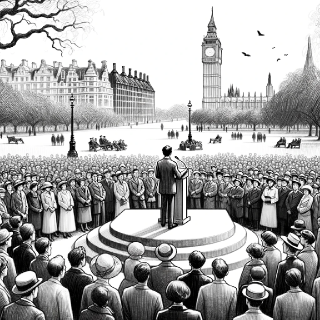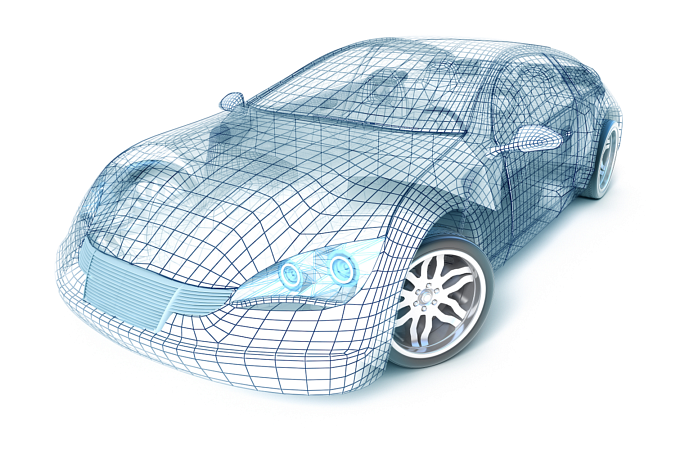
The rise of the “free lunch” mentality will fundamentally reshape markets and industries. The post-freemium, “all-free” economy is inevitable.
This is a part of our series about global megatrends. Please read the introductory post.
Once upon a time, newspapers were purchased at newsstands, letters required postage stamps, and tickets had to be bought to watch movies. There was no such thing as a free lunch.
That is about to change, and the word “free” is taking on a different meaning.
RATIONALE
Since the great PR revolution in the first half of the twentieth century, driven by pioneers such as Edward Bernays, the way we purchase industrial products has undergone significant changes. About a hundred years ago, rational reasons were advertised to the buyers. Satisfying a customer’s needs was the reasoning behind most marketing efforts. Yet since Bernays once said, “Man’s desires must overshadow his needs,” things have changed. The insightful BBC documentary by Adam Curtis, “The Century of the self”, deals with this development in detail.
The PR industry has perfected the art of generating desire for products we often do not really need. The problem that still exists is that while people’s desires can be manipulated, the amount of money in their purses remains unchanged. How do we market products to people who have a minimal amount of spending money? One result of the psychoanalytic approach to marketing was the realization that we generally tend to buy things we have already used. We feel safe with things we know and remain cautious of unknown products and brands.
Companies like Gillette pioneered this approach with their “razor and blades” business model. In short, that model gives a customer a product free of charge, but complementary or replacement parts are premium-priced. This works because customers already know the product, and they are more likely to spend money in such a context.
This principle has found extensive acceptance in many industries. Cable companies give free DVRs but demand paid subscriptions. Certain printers are dirt-cheap, but ink cartridges are exceedingly expensive. Some cheap and stylish coffee machines only work with expensive coffee capsules.
However, the razor-and-blades business model is being increasingly criticized. The rise of the Internet and the prevalence of information on products and business models have allowed the broad audience to learn that this model does not always work to their advantage. The modern consumer perceives the razor-and-blades model as sneaky.
The next advanced marketing idea was the “freemium” business model. Standard computer game versions are free, but additional “lives” or artifacts required to achieve the best results in the game must be purchased. Limited versions of CRM or ERP software are free, but more advanced or necessary functions require a fee. Such marketing practices work fairly well, but still, there is a considerable part of the audience that, once they have grown accustomed to the “free lunch” idea, rejects even the most valuable features as soon as they have to pay even one penny for them.
The freemium economy, based on the idea that products and services at no charge are irresistible, has aroused a seemingly unrealistic expectation in the audience to get “everything at zero cost.”
The markets have reacted to this development and begun promoting an “all-free” model from companies like Google. In this model, the product’s users agree to share their personal data (which they believe has little value) with the PR industrial complex, which in turn processes the data to generate advertising campaigns for its customers. The actual product or service, such as Google Maps or Yahoo Mail, is fully funded by advertising revenues and is free to users. This is the final stage of the “all-free” economy.
The model works so well that companies that used to sell products through freemium are giving up their paid options altogether in favor of the “all-free” model. Examples include the leading keyboard replacement SwiftKey, the internet radio service TuneIn, or the real-time translator Word Lens (which is logical, given that Google acquired it). Practically any piece of software that can help the PR industrial complex harvest a large amount of personal data seems to be going “all-free” these days.
All-free software is only the beginning of the market revolution. Consumers are likely to be increasingly price-sensitive in the age of steadily falling household incomes. It is only a matter of time for electronic devices and other products to become part of this trend. Fasten your seatbelts; we are quickly heading toward an “all-free,” post-freemium economy.
CONSEQUENCES
Individuals:
- Society will split into two classes of customers: the poor, who will use free products, and the rich, who will buy premium products.
- Privacy will become a rarity. Even those who consciously avoid using all-free, data-harvesting products or services will still be a source of data for others, e.g., Google Glass, which uses facial recognition to track everybody in sight.
- For the very poor, the all-free economy will mean more options and an overall improvement in their material situation.
- Data harvesting from “all-free” products will ultimately result in various privacy breaches and lead to numerous legal disputes, as well as potential class-action lawsuits.
- Personalized advertisements will become a prevalent phenomenon. Just like in science fiction movies, ads will be based on the long-term personal data gathered on the individual person who happens to be in the proximity of the given advertisement space, such as doors, windows, lifts, walls, pavements, lamps, furniture, cars, buses, trains, offices, etc.
Businesses:
- Businesses will replace their current customers with customers from the PR industrial complex.
- Data-harvesting products will bring their makers the highest market evaluations.
- Paid services and products in the middle- and the lower-price segment will generally suffer from decreasing demand. All-free products will undermine similar paid-for products from other vendors, creating a downward spiral. Company C1 offers product type PT1 for free but charges customers for product type PT2, while company C2 offers a paid product PT1 and provides product type PT2 for free.
- The range of “all-free” products will include objects that are today unthinkable as being free, such as cars (self-driving cars will have plenty of helpful advertisement space), houses (advertisements on walls, windows, and many other objects of daily use), mass transportation, food (with personalized, live ads on the packaging), etc.
- High-end, privacy-secured products will thrive as the global niche of wealthy customers continues to be an attractive source of income for businesses.
- In certain countries, privacy concerns will thwart the all-free business model.
- Personal data will become a global B2B currency.
There is also a more far-reaching consequence for the entire national – and probably even global – economy. The “all-free” products will continue cannibalizing regular, paid products. The more businesses that offer “all-free” products and make money by selling personal information, the less consumers will be willing to buy products or services. In that way, the all-free economy is basically destroying its own source of revenue. The following chart illustrates this effect:
In this scenario, starting with a certain number of all-free product users (“u1”), the economic benefits (i.e., a customer buying products) from more efficient targeted marketing (“P”) outweigh the costs of providing the free products and the advertising efforts (together, “F+A”). However, at one point (“u3”), the number of all-free users becomes so large that advertisement efforts no longer benefit the economy. Since most products and services are free, an increasing number of users will opt for free alternatives over paid ones.
One can only imagine what happens when developing and selling new products turns out to have a negative ROI. This is a self-propelling, global economic phenomenon. It is practically impossible for individual businesses to break out from the global “all-free” economy and go back to selling paid products. This is likely to become a tipping point for the “all-free” model that has every potential to cause a major economic crisis.
CONCLUSIONS
The cumulative amount of advertisement budgets is already mindboggling: according to AdAge, businesses worldwide spent a whopping $500 billion on ads alone. Other PR activities are not included in that figure, but they are likely to be at least another $20 billion.
This global spending is set to rise steeply in the next decades. Despite concerns about data privacy, most consumers remain ignorant of it. Clever PR by the PR industry will ensure it remains obscured for a long time.
Indeed, the rise of the post-freemium, an all-free economy, may appear disconcerting. Concerns about data privacy, a shifting consumer culture, the decline of entire product groups that cannot be easily converted into free data-harvesting products, and other issues cloud the long-term perspective.
On the other hand, many consumers will welcome the growing range of products and services they can use at no charge. “I don’t have anything to hide” will become a widespread mentality, further propelling the expansion of the “all-free” economy.
It is hard to see the outcome of this inevitable development. It will likely take 2-3 decades until its effects become apparent. One thing appears certain: from today’s point of view, the world economy based on the all-free model will be a peculiar, perhaps even unsettling, and confusing place to be.
Let’s start a conversation on LinkedIn or X.com (formerly Twitter).
I am a project manager (Project Manager Professional, PMP), a Project Coach, a management consultant, and a book author. I have worked in the software industry since 1992 and as a manager consultant since 1998. Please visit my United Mentors home page for more details. Contact me on LinkedIn for direct feedback on my articles.







Be the first to comment